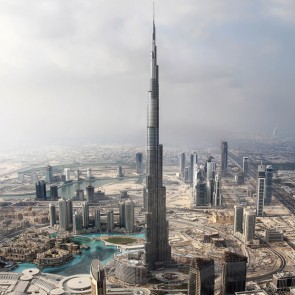 As the tallest building in the world opened to great fanfair in Dubai yesterday, the struggling emirate was well aware that it owed a big thank you to its oil rich neighbour.
As the tallest building in the world opened to great fanfair in Dubai yesterday, the struggling emirate was well aware that it owed a big thank you to its oil rich neighbour.
The building opened with a literal bang from some dazzling fireworks. Noted architect Adrian Smith says the Burj Khalifa is the culmination of his career to date.
The thanks came in the form of a naming ceremony, Dubai’s ruler renamed the previously-known Burj Dubai the Burj Khalifa.
Just last month the tower’s namesake and leader of Abu Dhabi, Sheikh Khalifa bin Zayed Al Nahayan, bailed out indebted Dubai to the tune of $10bn – £6.13bn.
Now the needle-shaped skyscraper which stands more than 800 metres tall and can be seen from 95 kilometres away and was to be the jewel in Dubai’s crown, is a stark reminder of the debt the emirate owes its neighbour.
Construction of the tower began in 2004 at the height of Dubai’s boom, but in the last month building has ground to halt across the emirate as funds dry up.
[media id=85 width=610 height=340]The building boasts the world’s first Armani hotel on the bottom floors, it also houses 900 Dubai residences, 37 floors of office space, a fine dining restaurant and an observation deck.
As well as being the tallest building in the world, it also has the most stories and highest occupied floor of any building in the world, and ranks as the world’s tallest structure. Visitors can look out from the highest observation deck in the world on the 124th floor.
Smith was the lead designer and a design partner with Skidmore, Owings & Merrill before he started his own firm.
SMITH: As a model for how to do a successful super-tall building, this will become the model for future super-tall buildings for 10 to 20 years to come.
Smith says super-tall buildings are expensive, so they’re rarely built. But each one increases the field’s understanding of forces like wind.
He says the building adds to the legacy of Chicago architecture. Smith says it’s important to export local knowledge and talent to compete globally.
To ignite public interest in the tower, its owner have released some facts and figures about the amount of work and materials that went into its construction.
The tower’s glass and steel exterior would apparently cover 17 football fields if laid out flat and will take some poor workers between six and eight weeks to clean.
The concrete used in the core of the building could build a pavement 1,283 miles long and the cooling system produces enough condensation to fill 20 Olympic swimming pools a year. It’s a good thing those eco-conscious developers will be using the waste to water the grounds.
Work on the Burj Dubai began in 2004 and continued rapidly. At times, new floors were being added almost every three days, reflecting Dubai’s raging push to reshape itself over a few years from a small-time desert outpost into a cosmopolitan urban giant packed with skyscrapers.
By January 2007, thousands of laborers, many of them brought in on temporary contracts from India, had completed 100 stories.
To ensure the tower doesn’t twist or break during bad weather, it is built in a Y-shape, with three ‘wings’ evenly distributing the building’s weight.
[adrotate group=”4″]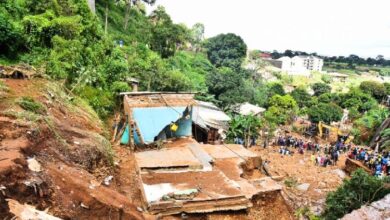 Landslide in Cameroon Following Heavy Rains: Dozens Trapped Under Debris
Landslide in Cameroon Following Heavy Rains: Dozens Trapped Under Debris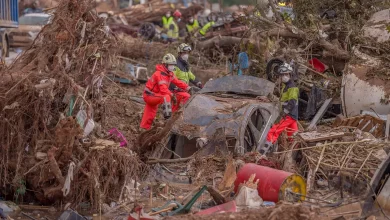 Valencia Requests €31 Billion in Aid Following Devastating Floods
Valencia Requests €31 Billion in Aid Following Devastating Floods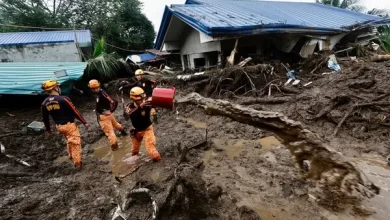 Death Toll from Tropical Storm Trami in the Philippines Rises to 97
Death Toll from Tropical Storm Trami in the Philippines Rises to 97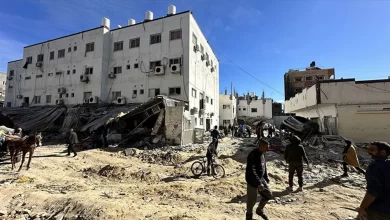 Israeli Forces Raid Gaza’s Kamal Adwan Hospital: Medical Staff and Patients Detained
Israeli Forces Raid Gaza’s Kamal Adwan Hospital: Medical Staff and Patients Detained